On the pages of a passport - the heritage of Ukraine, which shares a thousand-year history
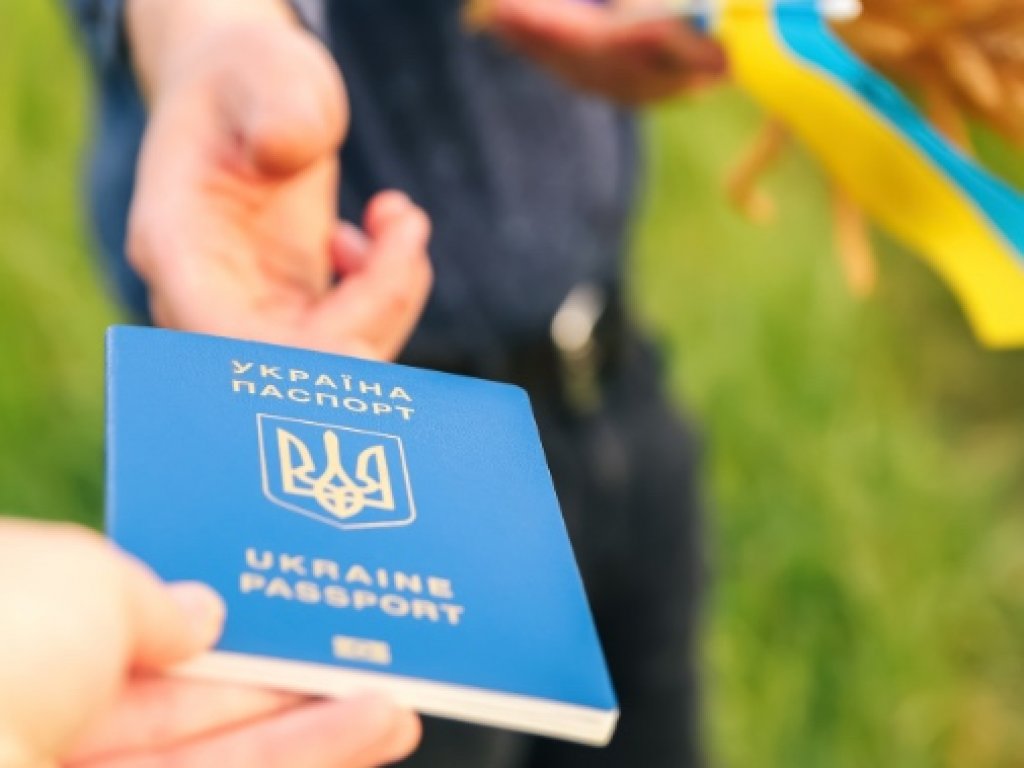

The Ukrainian passport in 2022 has acquired additional meaning. For many Ukrainians who are temporarily abroad, it reminds them of their connection to home.
The pages of the Ukrainian passport are decorated with iconic architectural and artistic objects from all corners of Ukraine. Next to them are slag heaps of Donbas and Dneproges, Kyiv shrines and picturesque towers of Kamyanets-Podolsk fortress. Unfortunately, some of the cultural heritage that adorns the pages of the passport is now under threat or has already been partially affected by Russia's war against Ukraine.
The Socportal, thanks to the project of the Union of Archaeologists of Ukraine, "United by History: Ukraine's Cultural Heritage on the pages of the passport", will tell about the value of the threatened objects, what they symbolise, as well as remind about the history of the Ukrainian passport, which had an "influential" predecessor in the early twentieth century.
The passport of the UNR and ZUNR as a marker of national identity
The Ivan Franko Museum holds the passport of his son, the famous aviator Peter Franko. Of course, remembering the dates, one can immediately recognise that it was issued not now but back in the times of the Ukrainian Revolution.
This is a sample of the first Ukrainian passport, which was issued to citizens of the UNR and ZUNR. They differed in some elements but equally symbolically represented Ukrainians in the world. The passport issued to Petro Franko on 4 October 1919 in Vienna has 24 pages.
A digital copy can be seen in the museum's collection. The UNR passport is equipped with all the attributes of the document of the time for Ukrainians who had to leave for other countries.
On the first page in the upper left corner there is a handwritten number of the document, in the centre there is a coat of arms (a lion with a crown), below it is printed: "PASSPORT OF THE UKRAINIAN NATIONAL REPUBLIC". The second page contains Franco's data: place and year of birth, occupation (centurion of the Ukrainian army), issued document for the purpose of free movement in the territories, "for the purpose of travelling and living in Yugo-Slavia (Ljubljana and Zagreb) and back," the description says.
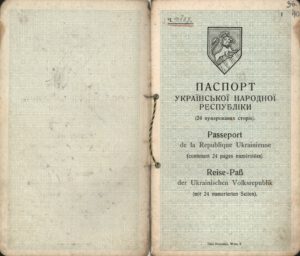
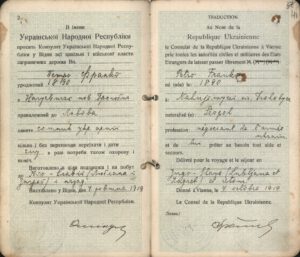
In addition, the document contains visas and stamps of the countries whose borders Franco crossed. There is no photo. Records are presented in Ukrainian, French and German.
Passports of the UNR and ZUNR were issued by the Ministry of Internal Affairs of the UNR and the Ministry of Foreign Affairs. Abroad, passports were issued by Ukrainian diplomatic missions, consulates, and passport departments for the representation of the UNR and ZUNR. They were mostly printed in the Globus printing house in Budapest. Such passports were valid from half a year to 1-2 years. They were mostly 24 or 16 pages long. They often contained a photo and a description of the person: height, face, hair colour, eye colour, mouth, nose, and special features.
Researchers note that thanks to the passports of the UNR, natives of Ukraine were already perceived abroad as representatives of a certain territory, representing Ukrainians in the world. Ukrainian emigrants could get a UNR passport - and it was not only a document that certified their identity but also one that delineated their state-national belonging.
Design of a modern Ukrainian passport - memos from all regions
Under independent Ukraine, there were several passport designs. It started with a "dark cherry book" with a small Coat of Arms; later, in 1997, the passport received a blue cover with Trident. In 2015, the design of a new biometric passport was supplemented with a guilloche image in the form of wavy lines and the words "UKRAINE UKRAINE" in addition to the small State Emblem of Ukraine made by linear raster.
The pages of the document were decorated with images of valuable objects of cultural heritage symbolising almost every region of Ukraine.
Obviously, the developers of the document, choosing such a format, intended to popularise the tangible cultural heritage of the state.
Since the beginning of Russia's war against Ukraine and the annexation of Crimea in 2014, some of the objects that are in our passports are under serious threat. In particular, we are talking about the fortress city of Naples of Scythia, Cuman stone women and Scythian burial mounds, the ancient Chersonesos Tauric in Sevastopol, the Belgorod-Dnestrovsky fortress, the pearl of the architectural appearance of Odesa - the Opera and Ballet Theatre and the Dnieper Hydroelectric Power Plant in Zaporizhzhya.
All these objects are part of Ukraine's cultural heritage, and their presence in the passport once again reminds everyone that Ukraine is united, particularly by its unique centuries-old culture. By the way, in 2023, the Ukrainian passport ranked among the most influential passports in the world by 4 more steps. Therefore, illustrations symbolising the indivisible Ukraine and reminding of monuments under threat acquire even more weight and symbolism.
Monuments under threat on the pages of a foreign passport
Chersonesos Tauride and Scythian Naples - symbols of statehood, which the enemy is trying to "rewrite"
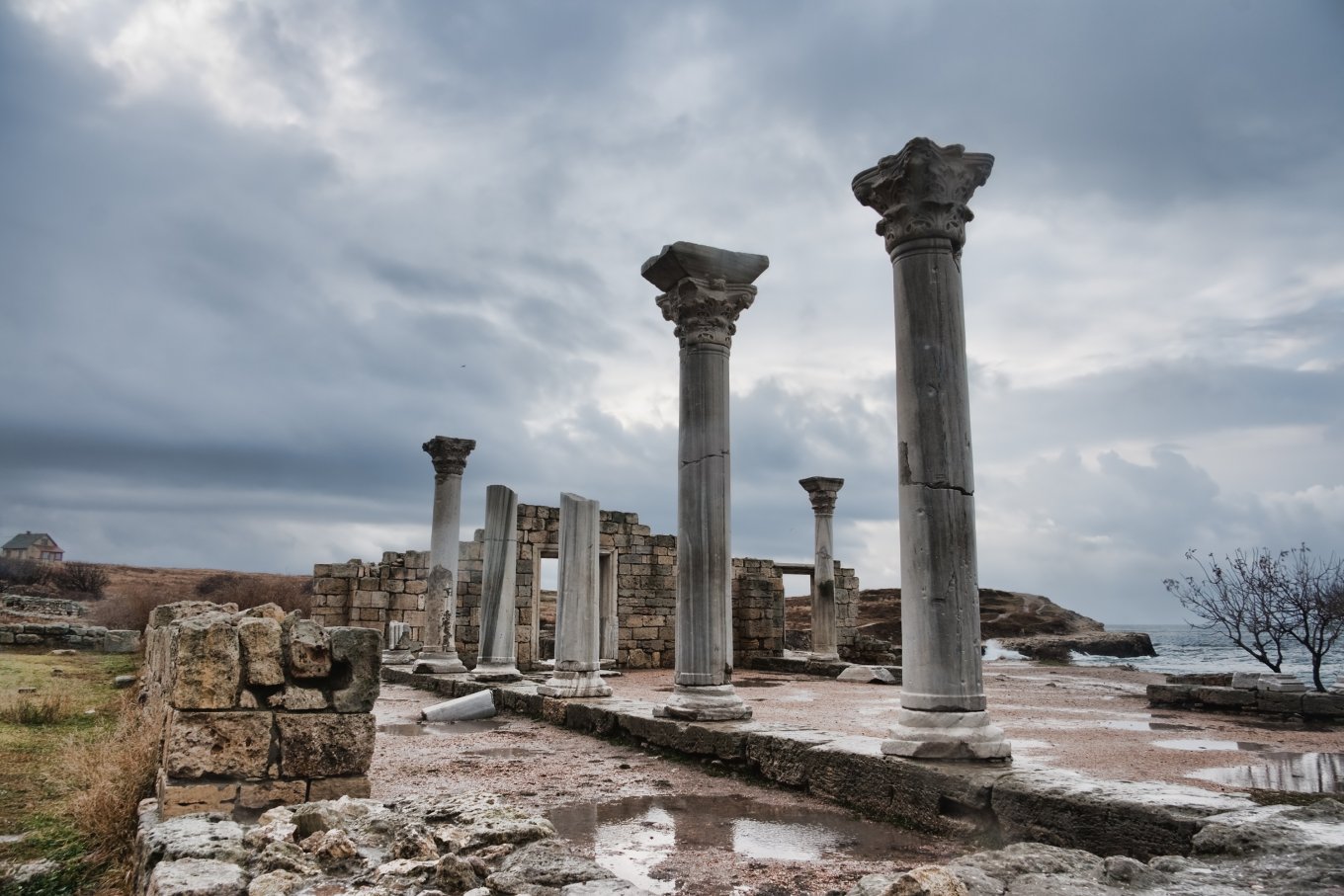
Two iconic objects from the pages of a passport - since 2014 are under the control of the terrorist country Russia. Scythian Naples and Chersonesos Tavrichesky were occupied by the Russians, having annexed the Crimean peninsula. Now the history of ancient monuments are trying to "fit" to the partly fictitious Russian historiography.
About it tells the candidate of historical sciences Denis Yashny. He emphasises that both sites - Scythian Naples and Chersonesos Tauric - are very important for the history of Crimea, for the history of Ukraine, as well as for European history in principle.
These two monuments are almost the same age. Chersonesos Tauric appears in the V century BC. And Scythian Naples two centuries later gets the status of the capital of the so-called Scythia Minor. Both sites are important. Naples is actually the embodiment of the history of Scythia on the territory of Ukraine, precisely in Crimea. And Chersonesos-Tavrichesky is the first democratic formation on the territory of Ukraine. Thanks to them we can trace the continuous development of different statehoods on the territory of Ukraine - Greek settlers, and then the local population, which was subordinated to the Scythian administration, - says Denis Yashny.
According to the scientist, Russia is now trying to deny this continuity of statehood on the territory of Crimea. After all, it goes against the "great-power" Russian historiography, which tries to create the illusion that before the Russians there were no more or less stable state formations in Crimea.
Everything that existed before the Russian annexation in 1783 was either adjusted to the convenient framework of Russian historiography or forgotten. For example, many Crimean Tatar monuments have gone into oblivion," says Denis Yashny.
True, the objects that are present in the Ukrainian passport, in the XIX century. received due attention, there were conducted research. But at the same time, part of their history even then began to be destroyed. Thus, the very name "Naples" (New City. - gr.), which the monument received at that time, was rather dictated by a certain fashion to give special importance to the Greek period in the history of Crimea. Although scholars often identify the monument with the settlement of Kermenchik.
In general, the fate of these objects was different. The fact is that if Chersonesos received a lot of attention in the XIX century, then Naples - during the construction of the new city of Simferopol, on the site of Akmestzhit, the capital of Kalga-Sultan, then used as a source for stone. And very many things were dismantled. And it is also important to talk about it, - says the scientist.
Now the Scythian Naples Reserve, which was created back in 2011, has the appearance of a pseudo-reconstruction. According to Denis Yashny, this echoes the principles of Russian historiography - to fit everything to their ideas about history.
And this is a very negative trend. When some objects, monuments are out of this narrative, they are simply forgotten. And if Chersonesos managed to fit in.... But again we must understand that Russia is not writing into its historiography the ancient Chersonesos, but the Byzantine one, linking it, first of all, with the so-called Baptism of Vladimir the Great. That Naples looks like a screen for many not quite historical things, presenting a very arrogant interpretation of the history of Scythia. The very settlement of Scythian Naples has turned into a pseudo-historical reconstruction with cow and horse skulls hanging on fences," says the scientist.
He adds that now it is necessary to draw attention to the threatened sites from the pages of the passport, because it is, in particular, the disclosure of Ukraine as an operator of the heritage, which belongs to the world heritage.
Ukraine as a country with a part of valuable European heritage has not been much talked about outside official circles. And this heritage, even though it is on the occupied territory of Ukraine, these are the monuments of Ukraine. And the fact that they are in the passport confirms that cultural heritage is an important part of Ukrainian identity. These are not just our monuments, because they are located on our territory, but also because we were engaged in them, because we researched them - Chersonesos in particular in co-operation with European scientists. And that, unlike Russia, which locked these monuments inside the occupied Crimea, Ukraine opened the doors - it made these monuments accessible to the whole world," Denis Yashnyi emphasises.
Dneproges is a unique industrial facility and a symbol of powerful scientific research
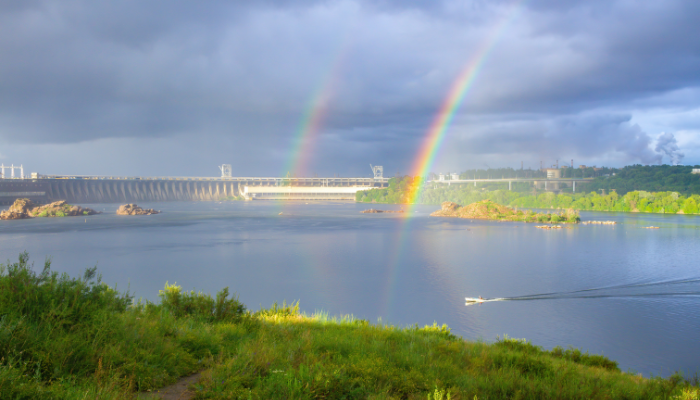
The image of the Dnieper dam in a Ukrainian passport began to resonate strongly with many Ukrainians in the summer of 2023 when the Russians destroyed the Kakhovka hydroelectric dam. In August 1941, the Dneproges dam was also destroyed by order of the Soviets. Officially - to prevent Nazi troops from crossing the Dnieper. During the destruction of the Dnieper dam, the civilian population and the ecosystem were also affected.
Anna Yanenko, a candidate of historical sciences, told this association with the image of Dneproges (or Dneprostroy).
She also adds that a photo of an industrial object simultaneously draws attention to Ukraine's threatened industrial heritage, which suffers not only from the terrorist actions of the aggressor country but also because it is insufficiently protected by law.
For example, in Poland, the state protects their industrial heritage, which includes huge ports and factories - the protest movements against the Soviets and for an independent Poland are directly related to it. In Ukraine, industrial heritage is often ignored. For example, the brewery of M. Richert on Podol was neglected for a long time. Our legislation on such heritage is imperfect, and many questions arise on revitalisation of these objects. Public interest has started to emerge only in recent years, now there are already a number of important studies on entrepreneurs and Ukrainian businesses of the XIX - early XX century, - says Anna Yanenko.
However, the image of Dneproges is interesting not only because it draws attention to the problems of protecting industrial facilities - but adds the scientist. In the context of identity, which is associated with images in Ukrainian passports, Dneproges symbolises the invaluable protective archaeological research that was carried out during its construction.
In 1927-1932, the Dneproges Expedition of the People's Commissariat of Education of the Ukrainian SSR (Dneprolstan/Dneprelbud/Dneproges) operated, the work of which was carried out by, among others, the All-Ukrainian Academy of Sciences. The main task of the expedition was to preserve tangible and intangible historical and cultural heritage and information about the natural landscape.
The construction of any hydroelectric power plant, as well as its destruction, leads to a colossal change in the water level - downstream and upstream. When on 6 June 2023 Russian terrorists destroyed the dam of the Kakhovka hydroelectric power plant - downstream there was flooding and destruction of all settlements, all archaeological monuments that are in the ground. Above - on the contrary, the water level dropped critically and artefacts began to appear at the bottom of the Kakhovka reservoir. A similar situation was when Dneprostan was being built. A complex expedition of a conservation nature tried to maximally explore the territory that was to be flooded, to save everything that would become inaccessible, - says Anna Yanenko.
The expedition, which worked on the territories where the Dnieper was built, gathered a huge number of specialists; it was headed by a famous historian, archaeologist, researcher of Ukrainian Cossacks, researcher of Ukrainian archaeology, museum researcher, founder of collections Dmytro Yavornytskyi. It also included Ukrainian archaeologists-intellectuals, most of whom later fell into the clutches of the Soviet punitive system.
Then, we discovered the famous archaeological monuments of the Neolithic and Bronze Age. In particular, the expedition discovered a valuable monument - the so-called "Voznesensky hoard", which is now kept in fragments in various museums but partially lost. The Dniepergesov expedition also studied the so-called Chumatsky trade because, after the construction of the dam, the traditional crafts directly related to the natural landscape were significantly changed or completely disappeared. The materials of the expedition's work, particularly the valuable photo archive, have survived to this day.
Ukrainian archaeologists, despite the fact that at that time they were forced to work under totalitarianism, did their best to preserve the historical and cultural heritage. They tried to be present at any large-scale earthworks as much as possible," says Anna Yanenko.
She lists industrial sites that became threatened during the Russian attack and, at the same time, also symbolises powerful scientific discoveries. The construction of the Nikopol South Pipe Plant, which now suffers from enemy shelling, allowed scientists to discover valuable archaeological monuments.
The territory where the plant was erected was a centre of ancient Scythian mounds. As well as the construction of separate objects of "Azovstal" in Mariupol was accompanied by extraordinary studies of Mariupol Mogilnik. These archaeological studios were conducted by Nikolai Makarenko. Subsequently, the scientist was repressed on the instructions of the Soviet authorities. Therefore, the image of Dneproges is not only about the hydroelectric power plant, but about the continuity of history," says Anna Yanenko.
Behind this seemingly ordinary picture is the history of both the construction and all the people who researched the historical and cultural heritage during and before the flooding of the territory, their fates. Most of the intellectuals concerned with the history of Dneprolstan were in one way or another repressed or physically destroyed - if not in 1933-34, then in 1937-38. This is a story about incredibly interesting exhibits and monuments that are still in our museums. And at the same time it is such an allusion to the modern crimes of the Russian Federation - the destruction of the Kakhovskaya HPP, - summarises Anna Ianenko.
Belgorod-Dnistrovskaya Fortress - an example of European architecture
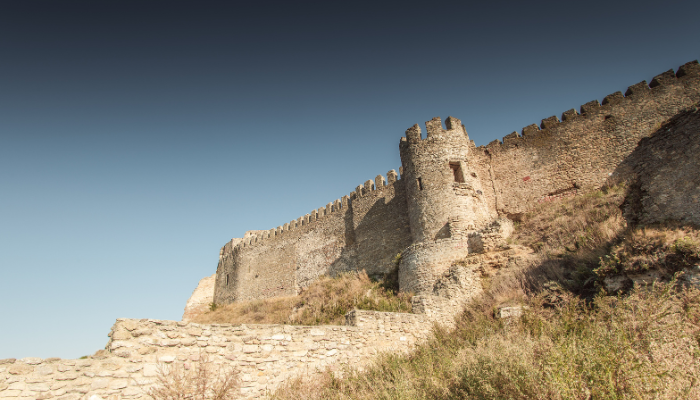
The Belgorod-Dnestrovsky fortress was studied for 11 years by Ukrainian scientist, Doctor of Historical Sciences Svetlana Bilyaeva. The fortress is unique, built in the "Moldavian time" - in the 15th century. - and has signs of elegant European architecture.
Then it was completed by the Turks, but the general outline of the fortress, the main courtyards - all this was built until 1484. And only at the beginning of the XVIII century, there completed the bastions that we see in the images", - says the scientist.
Describes that the unique monument has four ancient courtyards: commandant's, garrison, civil and port (sometimes called "lower", some craft functions of the courtyard are also recorded). The exact time of erection of the oldest elements was partly helped to determine by Turkish scientists who participated in the research of the monument.
Turkish specialists found documents about the construction of the lower courtyard in the XV century on the bank of the estuary. There was a built-in barbican - such were typical for this period of European culture. Therefore, the fortress was erected as the best examples of the pan-European type. Its citadel itself is a castellum of the Eastern Byzantine model. And already external belts of fortifications - the fortress of Constantinople type - triangular - was constructed at once from a stone. Thus we can see the transition of Eastern European fortresses to stone fortresses, - says Svetlana Bilyaeva.
She adds that the fortress belongs to "tower-type" structures and had 34 towers, of which about 30 have been preserved. She emphasises that such a monument should have been protected by UNESCO long ago. According to her, the fortress, which is in danger because of the war, is also being destroyed without restoration.
Firstly, we do not know where it will fly. For example, the Russians destroyed the fortress of Tyaginj, which I have been digging for 6 years. They smashed it and are still smashing it without end. God forbid that Belgorod-Dnestrovskaya should be preserved. Secondly, the fortress itself is being destroyed. It needs a good restoration, but there is no school of architectural restoration in Ukraine now. And after the war many monuments will have to be restored - in Odessa, which was already under UNESCO protection, in Kharkiv. And the fortress - it needs restoration, but there are no specialists," says Svetlana Bilyaeva.
Polovtsian and Scythian babas - "memory steles" of the Ukrainian South and the Left Bank
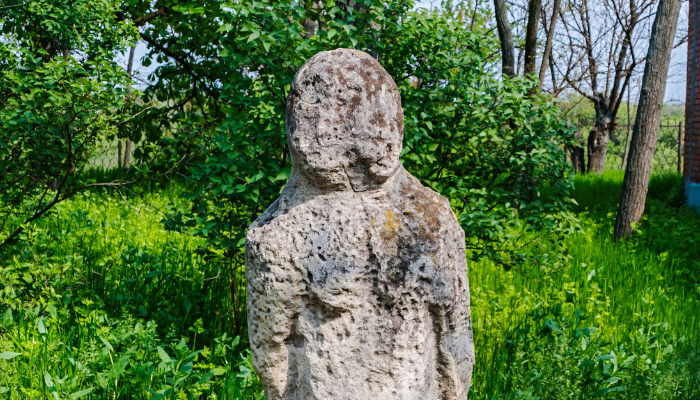
The image of historical stone women in the Ukrainian passport - have acquired new associations, in particular after the destruction of sculptures near the town of Izium, in Kharkiv region. At that time, some of the valuable objects were damaged due to vandalism by Russians. Now they are protected by special constructions. The same constructions "decorate" the exhibits in the city of Dnipro.
For the image of Scythian women in the passport - for models were taken those that are in the National Historical Museum in Kiev. Now they are, fortunately, in relative safety. But most of the valuable exhibits are under threat. About this tells the candidate of historical sciences, Eugene Sinitsa.
The very culture of anthropomorphic stelae is very ancient, it is not less than 5 thousand years old. "Babas" were characteristic of the inhabitants of our southern Ukrainian steppe - as part of the so-called Eurasian steppe corridor, which stretched from Mongolia to Ukraine. That is, "babas" are a typical element of the landscape, historical landscape, such a marker of the southern territories, the Left Bank and Slobozhanshchina. They were installed on the mounds. If you look at Shevchenko's etchings - and there they are present - so they were a recognisable element of the landscape even in the XIX century. "Baba" is in any large museum in the Dnieper region, Left Bank", - says the scientist.
Most stelae are tombstones. Scythian babas often with portrait features, Cumans, created during the developed Middle Ages in the XII-XIII centuries. - can be without a clear depiction of faces, but with a detailed depiction of clothes and hairstyles.
That is, it was probably about the image of a particular buried person or buried, which, in principle, later turned into an element of the cult of ancestors, - says Eugene Sinitsa.
He emphasises that the cult is connected rather with specific places, inhabitants of the Ukrainian steppe and they have no direct connection with the inhabitants of modern Ukraine - it is a part of the steppe culture.
We are talking about the fact that this is our historical landscape, this is a piece of our history embodied in artefacts. It is a part of Ukrainian identity," says Yevhen Sinitsa.
The scientist emphasises that each of the preserved "babas" is valuable and is a work of art.
Each specimen, even ancient, "rough" at first glance - unique. If we are talking about Polovtsian babas, there are hundreds of copies of them preserved, but it is still not enough. Each one has both scientific and artistic value," the scientist notes.
He stresses that the sculptures, made mainly of sandstone, have great endurance and are well preserved in lapidaries (an exposition of the remains of sculptures and buildings, most often presented in places of archaeological excavations. - ed.), outdoors. However, in times of full-scale war, artefacts cannot feel safe. Notes that "babas" in a war zone can suffer not only from a direct hit but also from the action of a shock wave.
Part of the lapidary sculpture, belonging to the Museum Fund of Ukraine, has remained since 2014 in the temporarily occupied territories. The fate of the objects is still unknown. Periodically, in the network, there is information about the removal of valuable objects for exhibitions in Russia.
For example, Crimean building slabs from the Old Crimea were taken to an exhibition in the Russian Federation and, it seems, never returned. There are questions about the Stone Grave Reserve near Melitopol. There is no information from there. They also had a rather large lapidarium. In autumn in the network slipped information that the museum of the Stone Grave was actively preparing for evacuation. Then some of the things from the Stone Grave flashed in Crimea at an exhibition. This is a habitual practice for Russians: appropriated objects are taken to the exhibition, and then they simply do not return, - says Evgeny Sinitsa.
He adds that the fate of such monuments becomes known only because indifferent Ukrainians post photos and videos on the net, as was the case with the exhibits of the Kherson Art Museum, which were "flashed" in Crimea.
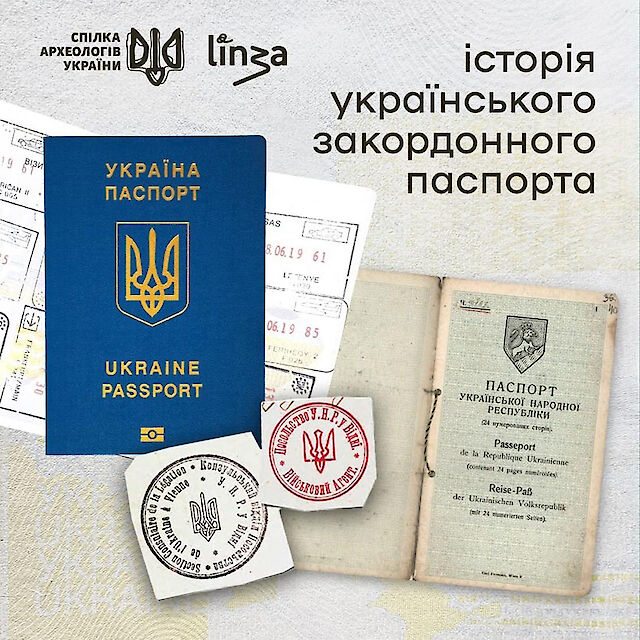
About the project
The grant project "United by History: Ukraine's Cultural Heritage on the Pages of a Passport" was initiated by the Union of Archaeologists of Ukraine. It is aimed at popularising the tangible cultural heritage of Ukraine among a wide audience.
Culture has the potential to overcome the conflict of values and form national identity. Value models are formed and produced in the space of culture and disseminated by its means. This is how they enter the everyday life of a person. Tangible cultural heritage (as part of our cultural space) is a component of historical memory, the basis for the formation of national spirituality, and the consolidation of national identity. Therefore, the issues of preservation, utilisation and development of the worldview and value potential of cultural heritage are topical," say the authors of the project.
They note that for a long time, no attention was paid to the careful treatment, preservation and popularisation of our cultural heritage, and its significance and potential were underestimated. Unfortunately, it is Russia's large-scale war against Ukraine and, in particular, the enemy's deliberate destruction and theft of objects and artefacts of Ukraine's tangible cultural heritage that has brought these issues to the forefront of public consciousness.
Being extremely ignorant of our own cultural heritage, we are unable to effectively and adequately resist the aggressive Russian policy, which is aimed at appropriating our heritage, levelling and/or silencing the material evidence actually available, and rewriting history. However, it is time for the intellectual communities of Ukraine to use the promotion of their tangible and intangible heritage as one of the powerful elements of cultural diplomacy," the researchers write.
The project provides for the creation of video content, in which explanatory texts in Ukrainian and English accompany the objects and artefacts that illustrate the pages of a Ukrainian citizen's passport. The information will be presented in an accessible popular science format.
So, people who have never even heard anything about these or those objects/artifacts from the pages of the passport, having familiarised themselves with the provided brief information, will be able to get interested and memorise it, - the authors of the project note.
The aim is also to encourage the audience to learn more - to visit museums or objects (real or virtual). It is assumed that each video will contain trackers/links, with the help of which the user can go to more detailed information.
Read also:
History of Xpark 2002-2023. From the swamp to the largest active park in Europe. Yuriy Zozulya
What to Bring Home from Ukraine – Looking For Authentic, Yet Offbeat Souvenirs
A Wine Drug, Feta Cheese and Lamb. What will be the First Gastro-route in Bessarabia?
 How can you support Ukraine?
How can you support Ukraine?